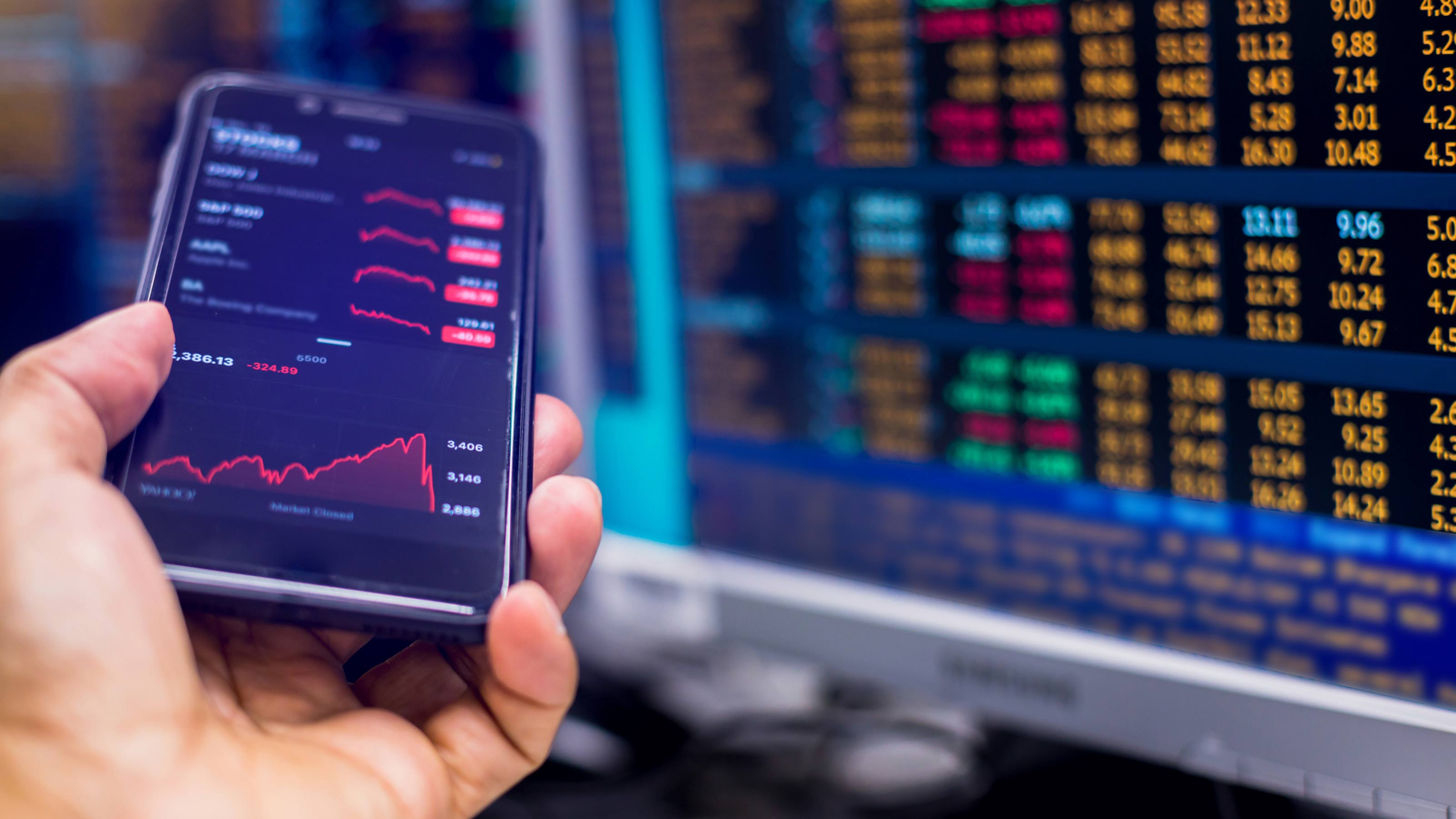When Online Investing Turns Deadly: Lessons from a Robinhood Trader’s Suicide
Gamification of financial apps can make investing fun, but unsophisticated investors can get in over their heads if they aren’t careful.

As an advocate for young adults prudently beginning their investing journey as soon as possible, I’ve found it difficult to shake this recent story: A young man from Illinois took his own life less than 24 hours after checking his Robinhood account and seeing a negative cash balance of over $730,000.
For those who might not know, Robinhood is an online trading and investing platform that has become incredibly popular in recent years for the movement it sparked in the brokerage industry toward commission-free trading. The service boasts more than 13 million users with an average age of 31. Almost every incumbent broker must now offer this feature, lest they be unable to compete effectively against lower-cost peers.
But this story isn’t just about Robinhood. In recent years, several Robinhood alternatives have sprouted up offering similar functionality for the same cost and often induce investors to sign up with the lure of free stocks or sign-up bonuses, fractional share investing, near-instant account opening and no account or investment minimums. In other words, all elements a young investor might desire to begin investing in small amounts.
From just $107.88 $24.99 for Kiplinger Personal Finance
Become a smarter, better informed investor. Subscribe from just $107.88 $24.99, plus get up to 4 Special Issues

Sign up for Kiplinger’s Free Newsletters
Profit and prosper with the best of expert advice on investing, taxes, retirement, personal finance and more - straight to your e-mail.
Profit and prosper with the best of expert advice - straight to your e-mail.
What many of these new investing platforms promote is simplified, free trading with fun and easy-to-use mobile app interfaces. Robinhood, in particular, utilizes a slick interface with confetti popping everywhere as if you had just won a prize when you execute a trade.
A College Student Dies in Despair
Alexander Kearns, a 20-year old University of Nebraska student who was home from college during the COVID-19 pandemic, has a cousin-in-law, Bill Brewster, who shared his tragic story as a cautionary tale for others. In his telling, he admonishes Robinhood’s trading interface because “they try to gamify trading and couch it as investment.”
He argues this game-like experience, combined with poor safeguards for vetting who receives approval for access to options trading, margin lending and other advanced investing tools, led to extreme emotional stress for Kearns after account balance messaging sparked alarm.
Kearns signed up for an account and started trading, although he did not fully understand what he was doing, Brewster says. Kearns had little money or investing experience, but Robinhood approved his application to trade options on margin, and he somehow ended up with a negative $730,000 account cash balance. Based on the note left by Kearns, this ultimately led to his decision to take his own life. Sadly, it appears he might not have been in as much trouble as he initially thought, because some trading activity had yet to settle in his account.
As a result, Brewster recommends that new investors to stay away from complex instruments like options and futures because they carry significant risk for those who don’t truly understand how they work.
My Advice to Anyone Trading on Stock Apps
I agree with Brewster: Making trading a game can be downright dangerous, and, as a user of Robinhood myself, I think it feels more like a gaming app than an investing app. It gives the impression of paper trading without real money at-risk … when, in actuality, real money weighs in the balance, as Alex Kearns painfully found out. With Robinhood, I do not feel as though I’m using a long-term investing app meant to build significant wealth through index funds or other prudent investments I typically espouse.
The primary risk with Robinhood and other services like it comes from having easy access to risky investing tools for people unaware of the true risks involved in using them. Other risks include trading in leveraged securities, and having people discover glitches and exploit them, among many others. All of these prove extremely problematic when an unsophisticated investor can take part with little difficulty.
As such, for people who do want to dabble with active trading to learn more about how it works, I personally advocate to begin trading on free platforms like Robinhood with small amounts of money they can afford to lose. In fact, buying and selling small sums in penny stocks on Robinhood can be useful for learning, because it places a small amount of skin in the game.
But most importantly for those interested in learning about active trading, ensure you place little of your money at risk. Further, avoid taking on undue risk with margin lending, options, shorting stocks or any other risky actions that can lead to significant loss if not handled wisely.
Sometimes Financial Gaming Can Be Good
Just as investing apps can be a great place to learn — when used appropriately in low-risk situations — I believe there is a place for gamification in financial apps. In fact, properly doing this can make money more fun to investigate, learn about and even build skills toward better financial decision-making.
For example, by young adults using financial apps to turn budgeting into fun games, apps can help users gain better control over their finances without them necessarily viewing it as a trying experience. This can be especially valuable for young adults who may learn these useful skills at an early age to build better financial literacy throughout their lives.
The Bottom Line: Investing Always Involves Risk, No Matter the Platform
In today’s fintech-filled world, it’s never been easier to start trading stocks or other financial instruments. In many ways, this has been a boon to the retail investor by slashing costs, democratizing investing in several asset classes, and having access to all of this at our fingertips. While this tragic story may be an extreme case and some may signal the need for greater personal responsibility, it is worth noting how low the barriers to entry for these sophisticated investments have come. Without proper educational resources, explicit messaging and suitability assessment, it can be very easy to get in serious financial trouble.
While Robinhood will not release the actual account details for user privacy protection, the company has issued a statement highlighting the incident and how it will change its platform and practices to improve as well as go toward preventing something like this from happening again. Some measures the company is considering include installing tighter eligibility criteria on more sophisticated investing tools, and also providing explicit messaging on multi-leg options spreads (presumably what Kearns used in his account).
In the end, the app might appeal to young adults for its low costs and flashy interface, both strong points for Millennials looking to get interested in investing. However, it can provide these features while still making users aware of the risks involved with investing and not allowing such easy access to risky products. This can go a long way toward avoiding costly investing mistakes or even worse outcomes.
Profit and prosper with the best of Kiplinger's advice on investing, taxes, retirement, personal finance and much more. Delivered daily. Enter your email in the box and click Sign Me Up.
Riley Adams, CPA, is originally from New Orleans but now lives in the San Francisco Bay Area, where he works as a senior financial analyst at Google. He is also the founder of WealthUp, a personal finance website where people of all ages can learn about money, discover their financial selves, and develop the skills they need to grow their nest egg.
-
 How to Safely Open an Online Savings Account
How to Safely Open an Online Savings AccountOnline banks offer generous APYs that most brick-and-mortar banks can't match. If you want to make the switch to online but have been hesitant, I'll show you how to do it safely.
-
 7 Ways to Age Gracefully Like the Best Stock Photo Seniors
7 Ways to Age Gracefully Like the Best Stock Photo SeniorsAs a retirement editor, I've gleaned valuable wisdom (and a lot of laughs) from one older couple that tops the seniors' stock photo charts.
-
 My First $1 Million: Banking Executive, 48, Southeast U.S.
My First $1 Million: Banking Executive, 48, Southeast U.S.Ever wonder how someone who's made a million dollars or more did it? Kiplinger's My First $1 Million series uncovers the answers.
-
 Time to Close the Books on 2025: Don't Start the New Year Without First Making These Money Moves
Time to Close the Books on 2025: Don't Start the New Year Without First Making These Money MovesAs 2025 draws to a close, take time to review your finances, maximize tax efficiency and align your goals for 2026 with the changing financial landscape.
-
 Is Fear Blocking Your Desire to Retire Abroad? What to Know to Turn Fear Into Freedom
Is Fear Blocking Your Desire to Retire Abroad? What to Know to Turn Fear Into FreedomCareful planning encompassing location, income, health care and visa paperwork can make it all manageable. A financial planner lays it all out.
-
 How to Master the Retirement Income Trinity: Cash Flow, Longevity Risk and Tax Efficiency
How to Master the Retirement Income Trinity: Cash Flow, Longevity Risk and Tax EfficiencyRetirement income planning is essential for your peace of mind — it can help you maintain your lifestyle and ease your worries that you'll run out of money.
-
 I'm an Insurance Expert: Sure, There's Always Tomorrow to Report Your Claim, But Procrastination Could Cost You
I'm an Insurance Expert: Sure, There's Always Tomorrow to Report Your Claim, But Procrastination Could Cost YouThe longer you wait to file an insurance claim, the bigger the problem could get — and the more leverage you're giving your insurer to deny it.
-
 Could a Cash Balance Plan Be Your Key to a Wealthy Retirement?
Could a Cash Balance Plan Be Your Key to a Wealthy Retirement?Cash balance plans have plenty of benefits for small-business owners. For starters, they can supercharge retirement savings and slash taxes. Should you opt in?
-
 7 Retirement Planning Trends in 2025: What They Mean for Your Wealth in 2026
7 Retirement Planning Trends in 2025: What They Mean for Your Wealth in 2026From government shutdowns to market swings, the past 12 months have been nothing if not eventful. The key trends can help you improve your own financial plan.
-
 What Defines Wealth: Soul or Silver? Good King Wenceslas' Enduring Legacy in the Snow
What Defines Wealth: Soul or Silver? Good King Wenceslas' Enduring Legacy in the SnowThe tale of Good King Wenceslas shows that true wealth is built through generosity, relationships and the courage to act kindly no matter what.
-
 An Investing Pro's 5 Moves to Help Ensure 2025's Banner Year in the Markets Continues to Work Hard for You in 2026
An Investing Pro's 5 Moves to Help Ensure 2025's Banner Year in the Markets Continues to Work Hard for You in 2026After a strong 2025 in the stock market, be strategic by rebalancing, re-investing with a clear purpose and keeping a disciplined focus on your long-term goals.